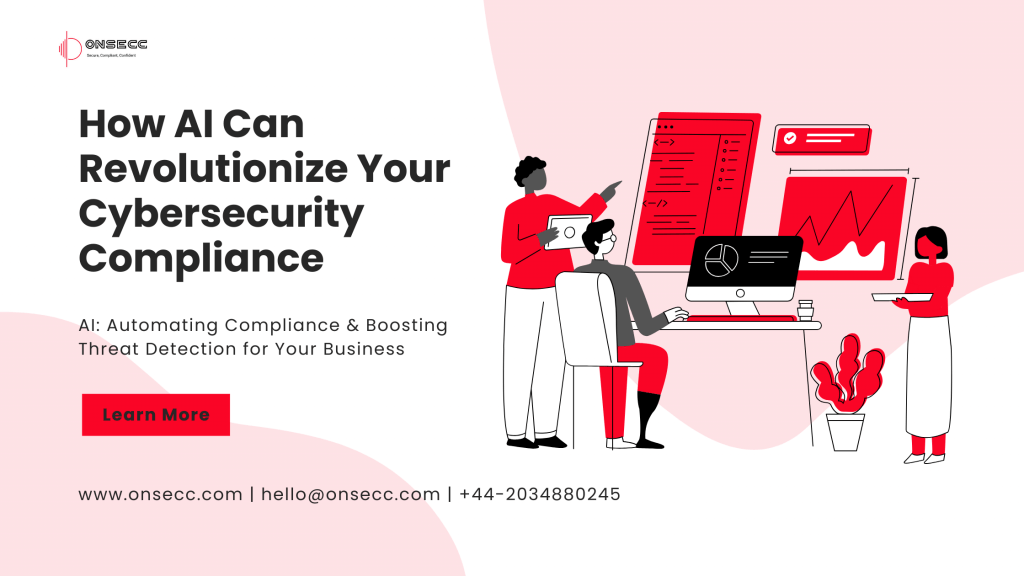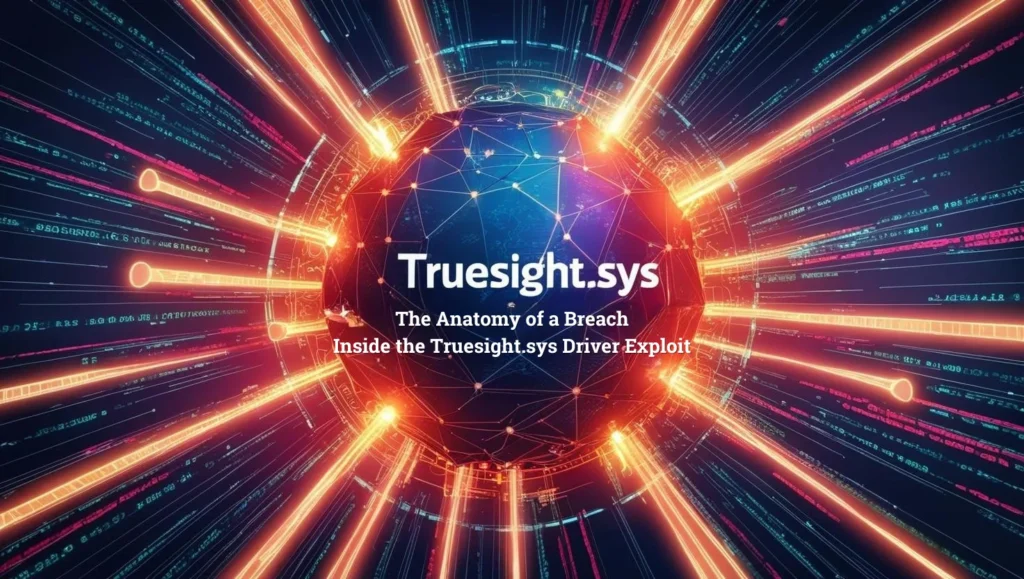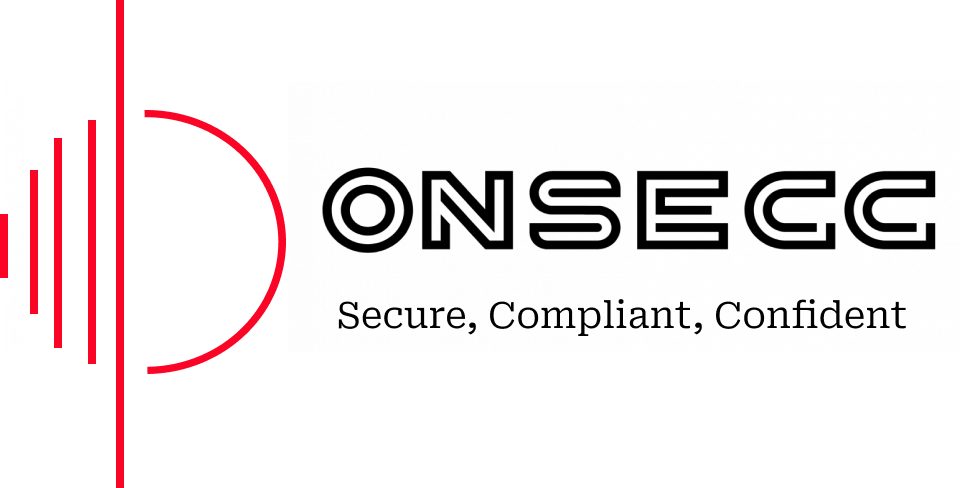Ensuring Cybersecurity Compliance with AI: A Guide for Executive Leaders
In an increasingly interconnected world, cybersecurity governance plays a pivotal role in safeguarding organizational data and mitigating risks. As organizations grapple with evolving cyber threats, the integration of AI technologies emerges as a promising solution. This article serves as a guide for executive leaders, offering insights into harnessing Artificial Intelligence for threat detection, mitigating biases, ensuring regulatory compliance, and managing workforce transitions. By exploring these critical facets, organizations can effectively leverage AI to safeguard their digital assets and uphold cybersecurity standards.
In This Article:

Understanding the Role of AI in Cybersecurity Compliance
Introduction
In today’s digital landscape, cybersecurity governance is more critical than ever. The integration of AI technologies has significantly impacted how organizations approach threat detection, risk mitigation, and compliance adherence. Executive leaders play a pivotal role in grasping the implications of AI in cybersecurity and steering their companies towards effective measures. This guide delves into the various facets of AI in cybersecurity compliance and offers insights for executive leaders on harnessing the power of Artificial Intelligence securely.
Harnessing Artificial Intelligence for Threat Detection and Prevention
AI presents a revolutionary solution for enhancing threat detection and prevention in cybersecurity. By leveraging machine learning algorithms, organizations can analyze vast volumes of data in real-time to identify anomalies and potential security breaches proactively. This proactive approach allows companies to stay ahead of cyber threats and safeguard their digital assets effectively.
Automating Compliance Processes with Artificial Intelligence Solutions
One significant advantage of Artificial Intelligence in cybersecurity governance is its ability to streamline compliance processes. Artificial Intelligence can automate routine tasks such as monitoring regulatory changes, conducting audits, and generating compliance reports. This automation not only saves time and resources but also reduces the risk of human errors, ensuring consistent adherence to cybersecurity protocols.
- Monitoring regulatory changes
- Conducting audits
- Generating compliance reports
Addressing Ethical Considerations in AI-driven Cybersecurity
As organizations embrace AI for cybersecurity purposes, ethical considerations become paramount. Transparency, fairness, accountability, and consent are essential principles that should guide the development and deployment of AI systems in the cybersecurity domain.
- Transparency and Explainability Ensuring that Artificial Intelligence systems are transparent and explainable is crucial. Stakeholders must have a clear understanding of how Artificial Intelligence algorithms make decisions and the implications of those decisions on cybersecurity practices.
- Fairness and Bias Mitigation Preventing bias in Artificial Intelligence algorithms is crucial to maintaining fairness in cybersecurity operations. Executive leaders must implement measures to mitigate biases and ensure equal treatment of all individuals and data sets involved.
- Accountability and Responsibility in Artificial Intelligence Systems Establishing clear lines of responsibility for the development, deployment, and monitoring of Artificial Intelligence systems is essential. This helps ensure accountability in case of any security breaches or compliance violations.
- Consent and Privacy Protection Respecting user consent and protecting data privacy are non-negotiable in AI-driven cybersecurity operations. Organizations must prioritize privacy rights and implement robust measures to safeguard sensitive information.
Managing Risks Associated with AI Implementation
While Artificial Intelligence offers significant benefits in cybersecurity compliance, it also poses inherent risks that organizations must address proactively. From data privacy concerns to algorithmic security vulnerabilities, executive leaders need to implement comprehensive risk management strategies.
- Real-world Examples:
Industry Adoption: Many financial institutions are leveraging Artificial Intelligence for cybersecurity compliance. For instance, JPMorgan Chase utilizes AI-powered algorithms to analyze transaction patterns and detect potential fraud in real time.
Healthcare Innovations: Healthcare organizations like Mayo Clinic are deploying Artificial Intelligence solutions for compliance with regulations like HIPAA. AI helps in analyzing patient data securely and ensuring adherence to privacy standards.
- Industry Perspectives:
IT Companies: IT firms like Microsoft are investing heavily in Artificial Intelligence for cybersecurity. Their Azure Sentinel platform utilizes AI to detect and respond to threats across hybrid environments effectively.
Healthcare Sector: Healthcare providers, such as hospitals and pharmaceutical companies, are increasingly adopting Artificial Intelligence to enhance compliance with regulations like HIPAA and streamline data security processes.
- Current Trends:
AI-driven Automation: Organizations are increasingly automating compliance processes using AI. This trend aims to reduce manual efforts and ensure consistent adherence to regulatory standards.
Ethical AI Frameworks: The development of frameworks for ethical Artificial Intelligence in cybersecurity is gaining traction. These frameworks focus on principles like transparency, fairness, and accountability to guide responsible Artificial Intelligence implementation.
- Challenges and Limitations:
Data Privacy Concerns: The use of Artificial Intelligence in cybersecurity raises concerns about data privacy. Organizations must balance the benefits of AI-driven insights with the need to protect sensitive information.
Bias in AI Algorithms: Bias in Artificial intelligence algorithms poses a challenge to fair cybersecurity practices. Executive leaders must address bias mitigation strategies to ensure equal treatment of all individuals and data sets.
- Regulatory Landscape:
GDPR: The General Data Protection Regulation (GDPR) in the EU imposes strict requirements for data protection and privacy. Organizations utilizing Artificial Intelligence in cybersecurity must ensure compliance with GDPR principles.
HIPAA: The Health Insurance Portability and Accountability Act (HIPAA) sets standards for protecting sensitive healthcare information. Artificial Intelligence solutions in the healthcare sector must align with HIPAA regulations to safeguard patient data.
- Training and Education
Upskilling Workforce: Organizations need to invest in training programs to equip their workforce with the skills required for AI-driven cybersecurity compliance. Training initiatives should focus on Artificial Intelligence algorithms, data privacy laws, and ethical considerations.
Certification Programs: Industry-specific certification programs help professionals stay updated with the latest trends and regulations in AI-driven cybersecurity. Certifications like Certified Information Systems Security Professional (CISSP) are valuable for demonstrating expertise in the field.
- Collaborative Approaches
Public-Private Partnerships: Collaborations between government agencies, industry associations, and private companies facilitate information sharing and collective efforts to combat cyber threats.
Cross-industry Collaboration: Sharing best practices and insights across different industries fosters collaboration in addressing common cybersecurity challenges. Forums and conferences provide platforms for cross-industry exchange of ideas and strategies.
Onsecc: Pioneering Cybersecurity Solutions
Onsecc is a leading provider of cybersecurity solutions that leverage AI technologies to enhance threat detection, compliance automation, and risk management. With a focus on ethical Artificial Intelligence and global compliance standards, Onsecc helps organizations navigate the complex cybersecurity landscape effectively.
Implementing Effective AI Governance for Cybersecurity
Effective Artificial Intelligence governance is crucial for ensuring cybersecurity compliance and minimizing risks. Executive leaders can follow a structured approach to discover, assess, and monitor Artificial Intelligence models while implementing data controls and regulatory standards.
Discovering and Assessing AI Models
Understanding the capabilities and limitations of AI models is essential for effective cybersecurity governance. An evaluation of AI algorithms for accuracy, bias, and ethical considerations is necessary before deployment.
Mapping and Monitoring Data and AI Flows
Tracking data and Automated Intelligence flows is vital in cybersecurity compliance. Organizations should map the flow of data within AI systems and monitor interactions to identify vulnerabilities or compliance failures.
Implementing Data and AI Controls
Establishing control mechanisms for data and Automated Intelligence operations is key to maintaining cybersecurity compliance. Access controls, data governance policies, and Artificial Intelligence monitoring tools are crucial for secure and compliant operations.
Complying with Regulatory Standards
Adhering to regulatory standards is a fundamental aspect of cybersecurity governance. Collaboration with legal and compliance teams is necessary to ensure Algorithmic Intelligence systems meet industry-specific regulations.
Conclusion
In conclusion, AI is a valuable tool for enhancing cybersecurity compliance if utilized ethically and effectively. Executive leaders must understand the role of Algorithmic Intelligence in cybersecurity governance and take proactive steps to harness its benefits while mitigating risks. By prioritizing transparency, fairness, and accountability in AI-driven cybersecurity operations, organizations can navigate the evolving threat landscape with confidence and compliance.
“Transparency, fairness, and accountability are the cornerstones of ethical AI in cybersecurity.“
Ion Lake, Cybersecurity Expert
Contact info
- 3rd Floor, 86-90 Paul Street, London, EC2A 4NE, UK
- +44-2034880245
- hello@onsecc.com
Share Blog On
Download Free Assessment Guide of ISO 27001 : 2022
Recent Posts:
-
 Cyber Insurance for Small Businesses: What You Don't Know Could Cost You Everything
Cyber Insurance for Small Businesses: What You Don't Know Could Cost You Everything -
 Meet AkiraBot: The AI Spam Demon Haunting 420,000 Websites (and Counting)
Meet AkiraBot: The AI Spam Demon Haunting 420,000 Websites (and Counting) -
 2,500 Faces of Deceit: The Proliferation of Malicious Truesight.sys Variants
2,500 Faces of Deceit: The Proliferation of Malicious Truesight.sys Variants -
 Zero-Day Vulnerabilities: The Invisible Threat Redefining Cybersecurity
Zero-Day Vulnerabilities: The Invisible Threat Redefining Cybersecurity -
 The Middle East’s Cybersecurity Gap: Building Defenses for a Digital Future
The Middle East’s Cybersecurity Gap: Building Defenses for a Digital Future -
 The Cost of Non-Compliance: What the TfL Cyber Attack Teaches Us
The Cost of Non-Compliance: What the TfL Cyber Attack Teaches Us -
 GDPR in the United States: A Do or Die Situation for Businesses
GDPR in the United States: A Do or Die Situation for Businesses -
 Is Your Business PCI Compliance Certified? Don’t Risk It!
Is Your Business PCI Compliance Certified? Don’t Risk It!
FAQs
At Onsecc, we are dedicated to providing comprehensive AI-powered solutions that streamline compliance processes and strengthen your cybersecurity posture. Our solutions can:
- Automate compliance tasks: Free your team from repetitive tasks like audit preparation and regulatory change monitoring.
- Identify and prevent threats: Leverage AI to analyze vast amounts of data and uncover hidden anomalies that might indicate a cyberattack.
- Reduce human error: Eliminate the possibility of human mistakes in compliance procedures, ensuring consistent adherence.
Security and fairness are paramount at Onsecc. We prioritize transparent AI development and rigorous testing to mitigate bias in our algorithms. Our solutions are built with robust security measures to safeguard your data and ensure regulatory compliance.
Data privacy is a critical aspect of our services. Onsecc utilizes anonymization techniques and adheres to industry-leading data security standards. We empower you to maintain control over your data while leveraging AI’s potential for threat detection.
Onsecc offers a range of AI-powered cybersecurity solutions tailored to your organization’s specific needs. Contact us today to schedule a consultation and explore how Onsecc can empower you to achieve robust cybersecurity and effortless compliance.
Organizations can integrate decision-making styles with Onsecc by aligning each style’s strengths with the platform’s capabilities. For example, analytical individuals can utilize Onsecc’s detailed reporting features, while intuitive decision-makers may appreciate its user-friendly interface for quick insights into compliance status. By leveraging these styles effectively, organizations can enhance their overall cybersecurity compliance efforts.


